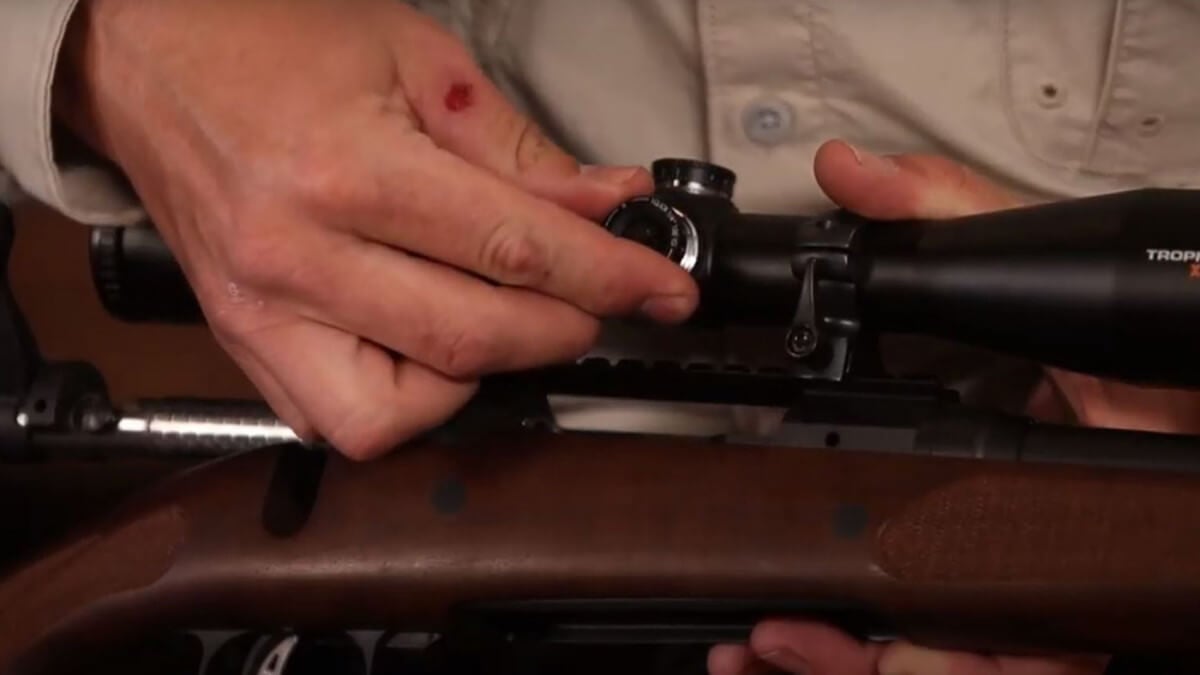- Savage Blog
- Boresighting a Rifle - 3 Easy Methods
Boresighting a Rifle - 3 Easy Methods

After you have mounted your optic to your rifle, it’s time to boresight it. Boresighting is roughly aligning the bore to the reticle of the scope. Boresighting a rifle is a critical step to help you get on paper at a close distance before you zero the rifle at the range. If you don’t boresight your rifle before zeroing it, a sighting shot at 100 yards is likely to be a miss – but in what direction? Now it’s a guessing game to try and hit the edge of the paper on before you can start adjusting the scope. Talk about waste of ammo! We’ll walk you through three easy methods on how to boresight a rifle.
As always, the first step is to make sure the rifle is unloaded, clear of ammunition and the safety is on. Be sure that there is no ammunition present.
Use a Boresighting Device
There are a few different types of boresighting devices on the market – two of the most popular are collimator and laser boresighters. Make sure you read the device’s manual to know exactly how to use a boresighter. When using any device, carefully insert the arbor into the bore. You don't want to damage the crown or the rifling as you insert it. Be sure to remove the boresighter when you're finished with the boresighting process.
Collimator
A collimator is a device that is inserted into the muzzle end of the barrel and uses a reflective surface and lenses to replicate a target. When you look through the optic, you’ll see a target-like grid. To boresight using a collimator, simply turn the windage and elevation turrets so the optic’s reticle aligns with the collimator’s center. Easy as that!
If you have to adjust more than 6-8 inches to align the reticle with the collimator’s center, that’s a sign that you probably have an issue with how your optic is mounted. If that’s the case, take a step back to double check the mounting and correct it.

Laser Boresighter
A laser boresighter works in a similar way. Some laser boresighters are inserted into the muzzle end of the barrel, others are placed in the rifle’s chamber like a dummy round. These devices emit a laser, which should be pointed at a target about 25 yards down range (always in a safe direction). Like the collimator, look through the optic and simply turn the windage and elevation turrets so the optic’s reticle aligns with the laser.
Again, if you have to adjust more than 6-8 inches, check how your optic is mounted.

Find the Mechanical Center
The next two methods can be done if you don’t have a boresighting device.
This method involves finding the middle of the scope’s mechanical adjustment range. This is done so the scope has its full range of travel in all direction.
- Turn the windage turret all the way to one direction
- Count the revolutions as you turn the windage turret to the opposite direction
- Dial the turret halfway back to reach the middle.
- Repeat this process on the elevation turret.
Now the optic should be pretty close to the center of its mechanical adjustment range.
Depending on the type of shooting you’ll be doing, some people prefer to “center” the reticle lower so there is more upward travel in the optic for longer distance targets.

Look Through the Bore
And finally, the old school “look through the bore” method. This is a very rough method of boresighting.
- Remove the bolt from the rifle (check your rifle’s manual or Firearms Hints to learn how to do this on your rifle)
- Look through the bore and align it with the center of a distant target
- Look through the optic and adjust the turrets to align with the center of the distant target you saw through the bore.
Now that your rifle is boresighted, it’s time to head to the range to sight in and zero it!

